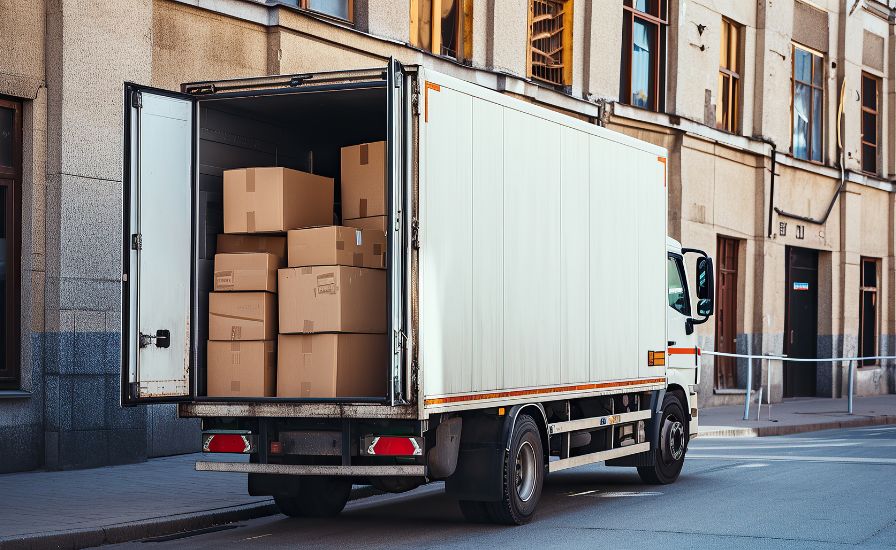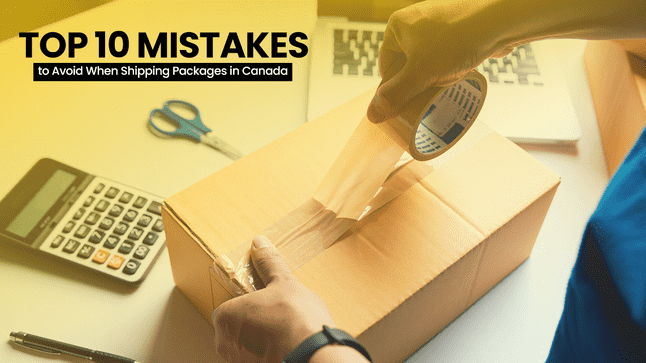The speed of delivery and shipping is important in today’s world. The expectations for the delivery and shipping services in Canada have increased dramatically. When you are shipping an important document for business or ordering an iPad as a last-minute gift, knowing what express delivery is and how it works could save you a lot of trouble and time.
So, what is express shipping, and how does it work? This blog will provide all the essential information you need about express shipping, including facts that may change your perspective on shipping for good.
Understanding Express Shipping
Express shipping is a premium shipping service created to deliver parcels faster than standard shipping methods. It is best for customers who need their goods to arrive on time, often within 1–3 business days or sometimes even on the same date.
Unlike regular shipping, which can take several weeks depending on the distance and carrier schedule, express shipment prioritizes your package in transit, ensuring that it moves through the supply chain as efficiently as possible.
How Express Shipping Differs from Other Services
The main difference between express shipping and other options lies in speed and handling. Standard shipping might travel through various sorting centres, sometimes getting delayed at each step. In contrast, express shipping employs a streamlined process that includes
- Priority handling at sorting facilities
- Faster transit routes are utilized by air instead of the more expensive ground routes.
- Dedicated courier service and fewer stops
These factors are all contributing to a significant decrease in delivery time.
The Process Behind Express Shipping
You may think express shipping is just faster trucks or planes, but there’s more to it. Here is the journey that an express shipment takes.
Pick-Up: When you book an express shipment with a courier service, they often provide a speedy pick-up service, sometimes in as little as a few minutes to a few hours after you place your order.
Sorting: Once the package is picked up, it goes to a special facility appointed for express deliveries, where it is treated with more care and service than regular shipments.
Transport: Most express shipments go by airway and bypass land transport, which can be much slower. For deliveries that are longer distances and international, air travel is often better than land transport.
Last-Mile Delivery: Upon arrival in the city of your destination, express packages often use local couriers or delivery vehicles to complete the “last mile” easily.
Why Choose Express Shipping?
Businesses and individuals alike rely on express shipping for many reasons:
- Urgency: When time is money, express delivery can save valuable hours or even days.
- Reliability: Express shipments frequently receive enhanced tracking and customer service.
- Safety: Higher-priority handling very often means a lower probability of damage or loss.
- Customer Satisfaction: For retailers and service providers, express offerings improve customer experience and trust.
Interestingly enough, many people don’t realize that express shipping can be less costly than they believe, especially when indirect costs are considered, such as delays and lost business.
Express Shipping and Same Day Delivery: The Difference
You must hear about the term same day delivery along with “express shipping. While they sound similar, there are major differences.
- Same day delivery guarantees your package arrives on the very day it’s shipped, usually within hours.
- Express shipping typically delivers faster than standard but can take one to three days.
Same day delivery is often limited to specific urban areas due to logistical challenges, while express shipping covers broader regions, including rural and remote locations.
The Role of Partial Truckload Shipping in Express Delivery
When it comes to shipping larger items, partial truckload shipping plays an important role in keeping prices and times down. Unlike full truckload shipping, which needs the whole truck for one shipment, partial truckload combines various smaller shipments going to the same location.
When packages are too large for air freight or require proper scheduling, you can use this method for express shipment. It provides a middle ground between standard freight and express parcel delivery, mixing speed and cost efficiency.
Understanding the basics of partial truckload and full truckload shipments can help businesses optimize their shipping strategies: For example:
- Utilize full truckload services for huge and non-urgent shipments.
- Choose partial truckload shipping for medium-sized, somewhat urgent shipments.
- Choose express shipment or same day delivery for shipments that are urgent and small parcels.
How Express Shipping Benefits Canadian Businesses
When it comes to companies focused on Canada, using or offering express shipping may be beneficial in various ways:
Deadline urgency: Everyone is accustomed to meeting tight deadlines. When something is needed urgently, be it a medical supply line or retail breath mints, express delivery ensures the deadline is met.
Growing your footprints: Express delivery allows businesses to potentially open up markets that may be unreachable using standard or slower shipping methods.
Selling advantage: Customers expect timely delivery from businesses. Companies that do not offer express options may be sacrificing sales.
Supply chain resiliency: Express delivery options can act as backups in case standard delivery faces any issues such as weather or strikes.
Tips for Getting the Most Out of Express Shipping
If you’re hoping to increase the benefits of express shipping, here are a few expert suggestions:
- Plan Ahead of time: Like any other shipment, even express shipments can benefit from scheduling in advance to be certain that you get the pickup windows you need.
- Package Smart: Use the right packaging so that you prevent delays from repacking and inspection.
- Use Correct Addresses: Recheck the delivery information so that you don’t have to deal with returns for wrong addresses or missed deliveries.
- Track your Shipment: Use carrier tracking tools to follow the shipment status so you can communicate with your customers promptly.
- Recognize Carrier Options: Conduct thorough research to compare pricing, transit time, and policies.
Conclusion
Express shipping, conceived to meet the demands of today’s modern world, is a critical shipping solution. Express shipping can be defined by all of the elements existing between fast handling and priority on the package to the rapid speed of technology that makes it possible to speed the transport of e-commerce deliveries. If you plan to use express shipping as a business using partial truckload shipping or as an individual needing same day delivery, knowing this express shipping method will allow you to use your options wisely.






